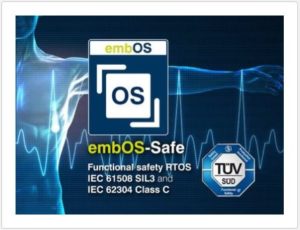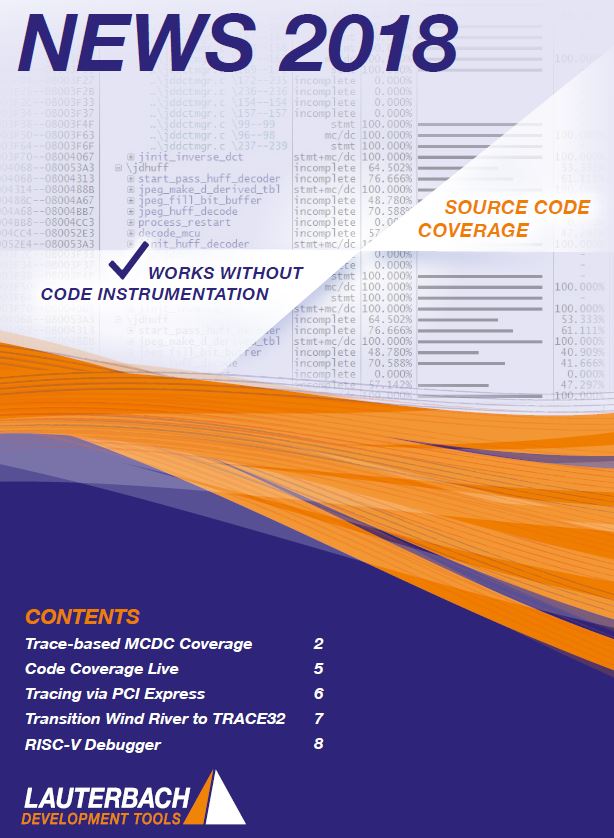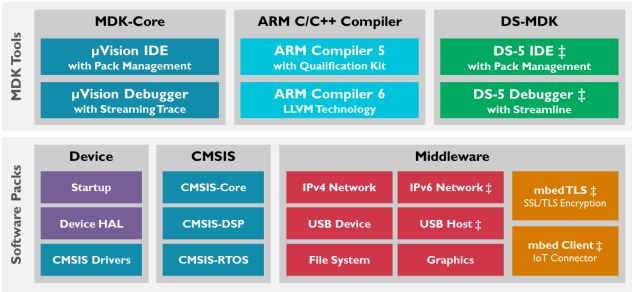SEGGER announces embOS-Safe, the SIL 3 certified RTOS for safety-critical applications
 “Certification is vital to many safety applications. embOS-Safe provides developers with a comprehensive tool to match their safety and reliability requirements,” says Til Stork, embOS Product Manager at SEGGER. “embOS is now certified according to IEC 61508 SIL 3 and IEC 62304 Class C, and it simply works!”
“Certification is vital to many safety applications. embOS-Safe provides developers with a comprehensive tool to match their safety and reliability requirements,” says Til Stork, embOS Product Manager at SEGGER. “embOS is now certified according to IEC 61508 SIL 3 and IEC 62304 Class C, and it simply works!”
embOS, SEGGER’s signature RTOS, is known for its small footprint, performance, reliability and intuitive API, and has been proven for more than twenty years in commercial applications.
By popular demand, a certified version is now available for safety-critical applications.
Certified by TÜV SÜD, embOS-Safe complies with the functional safety standards IEC 61508 SIL 3 and IEC 62304 Class C (medical devices).
The certification highlights the high-quality standards of SEGGER’s development processes, now making it even easier to use embOS in safety-critical key market segments such as medical, automotive, aviation and home appliances.
Customers requiring embOS-Safe gain access to a proven, reliable solution with all embOS key features, including multi-tasking, comprehensive communication and synchronization services, along with full memory protection.
embOS-Safe is provided with a certification kit containing all necessary documents, including the comprehensive embOS safety manual, making it easy to integrate it into your application, even for applications that have not taken advantage of an RTOS before.
embOS-Safe is further complemented in safety-critical environments by SEGGER’s leading cross-platform IDE Embedded Studio, the proven embOS/IP and emUSB communication stacks, the bullet-proof file system emFile and the industry-standard graphics package emWin, as well as the J-Link debug probes and Flasher production tools.
IEC 61508 is the standard for functional safety and is referenced in multiple derived standards.
embOS certifications according to other standards, including ISO 26262 for automotive devices, can consequently also be done easily.



 “-The Best feature about Lauterbach is the way it’s able to handle and present tracedata. If you have the ability to use trace, you should absolutely do so. The way that Lauterbach handles tracedata is exceptional and I can’t say there is any better tool to find bugs with. To be able to have the Trace chart with symbols(left), the trace data(middle) and the source code(right) in track-mode, which means when you click in a window the other two will follow to that line of code. This makesit very easy to see what have happen and find if there was any unwanted behavior.
“-The Best feature about Lauterbach is the way it’s able to handle and present tracedata. If you have the ability to use trace, you should absolutely do so. The way that Lauterbach handles tracedata is exceptional and I can’t say there is any better tool to find bugs with. To be able to have the Trace chart with symbols(left), the trace data(middle) and the source code(right) in track-mode, which means when you click in a window the other two will follow to that line of code. This makesit very easy to see what have happen and find if there was any unwanted behavior. 

